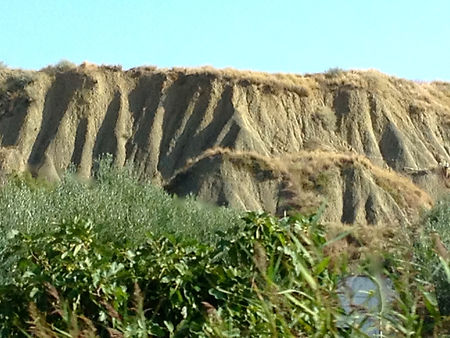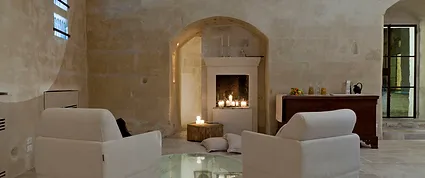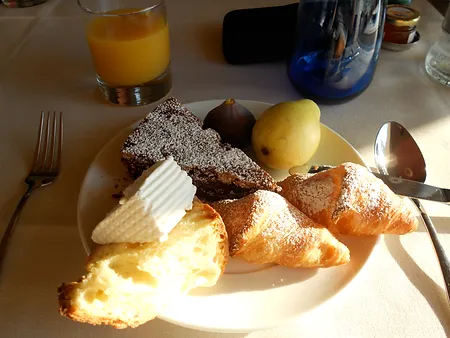A short distance from Matera, in the vast Basilicata landscape of rugged gullies, lies Pisticci. It is surrounded by a mantle of white clay earth, devoid of trees and grass, an open-air geological museum that has inspired writers and poets throughout the ages.
” ….e d’ogni intorno altra argilla bianca senz’alberi e senza erba, scavata dalle acque in bocche, in coni, in piagge d’aspetto maligno, come un paesaggio lunare …. e da ogni parte non c’erano che precipizi di argilla bianca, su cui le case stavano come liberate nell’aria” Carlo Levi Cristo si é Fermato a Eboli
This distinct and unique setting that is Pisticci, a town sitting among crags and bluffs, has been deemed by the Ministry of Heritage and Cultural Activities as one of the 100 marvels of Italy. It is indeed a heritage worth preserving as it safeguards the origins of the ancient culture and history of Basilicata. The architecture of much of the town is singular and fascinating and represents a “spontaneous” form of building by the peasant farmers: small white houses all aligned in rows.

These so-called “lamie” built with stones and bricks and bound in the past with water and red clay, lend great charm to Pisticci.
The approach into Pisticci is winding and steep, every twist announcing a new vista below. As the first signs of town life appear, one soon realizes that these are but a glipse of a town not yet in sight. Finally, with one last turn, the precipitous ascent to the town centre suddenly appears. The road is lined with little shops; some with closed metal shutters, others displaying sun-faded wares in their windows. A lone bony dog wanders aimlessly, hoping for a morsel where none is forthcoming.
It is the few moments just before the afternoon lull gives way to the reawakening of town life: the old and battered metal shutters screach open, and, as in a broadway musical, people, old and shuffling, young and nimble, pop out on cue in synchronized step, out onto the street. They are all moving in the same direction: the town piazza, some to gather at the cafè to continue their rants against the government; others to buy a gelato; the young girls stroll swinging their hips, laughing noisily, hoping for attention; the young men, the few left in the town, follow their saunter admiringly.
Pisticci suddenly swells with people. The promenade, from the entrance of the town to the main square, flows rythmically. Cafés begin churning out aperitivi, the church bells ring and, children running frenetically find cover behind their mother’s skirts.
It is a scene that has endured forever, never changing: the festive, desperate attempt to infuse a life, usual and ageless, with novelty.
Below the underlying hills of Pisticci and down across the Valle dei Calanchi, or the valley of gullies, awaits a hidden gem, and a delightful surprise in our travels through “undiscovered” Italy.
Imposing and magisterial, its turrets flanking the main palazzo and rising above the walls that girdle the central courtyard, it stands in defence of invading saracens and brigands. It beckons, but not quite, —–its purple coloured fortress door, still a forceful reminder of days of plunder and onslaught; of a time in the distant past.

Now however, its whitewashed walls, brilliant in the sunlight, temper the character of this 16th century fortress turned masseria hotel. The fragrant wild flowers and cacti running alongside, now invitingly extend a welcoming hand.
Torre Fiore too is a paradox, much like the land surrounding it—a land of contrasts.

With the first step through the portal and into the masseria one is immediately enveloped into its calming oasis-like atmosphere. The central courtyard surrounded by a row of the characteristic “lamie” houses typical of the area, presents a quiet refuge against the dramatic backdrop of the boundless canyon beyond.
The rhythmic flow of water breaks the immense silence. It is the first signal of the ancient/modern contradiction that exists here: a streamlined, angular, trough-like water basin, atop which sit 3 urns or “r’zzaul” once carried by the town women on their head to transport water from the fountains or streams.
The main tower building—-la casa del padrone— or landowner’s manorhouse dominates at the centre of the courtyard. It has now become with its moorish turrets, the lobby, bar and chill-out lounge with a spacious and luxurious two bedroom suite upstairs. The “lamie” houses around the periphery of the courtyard were dwellings of the workers of this one-time farming community. Now they are the thirteen suites that accommodate the modern invaders.
The Giannone family who own and have lovingly restored this ancient structure, have taken care to create a distinctly modern luxury resort rooted in history. The vestiges of a once thriving farming community are simply but pleasingly displayed on the walls of the lobby and suites: from scythes to woven baskets, from clay pots to iron tethers. Contrarily, the lighting and furniture reflect the best of modern Italian design: comfortable, clean lines and bold colours that serve simply to highlight the dichotomy between the old and the new and render the “whole” as an exciting aesthetic experience.

Here, below a cloudless sky reigns silence, peace, and fresh air. From the lovely infinity pool the eye is allowed to wander and gaze across the gully to the primitive land below, to the secular olive trees, to the magnificence that surrounds Torre Fiore.
Balm for the weary soul.

0



